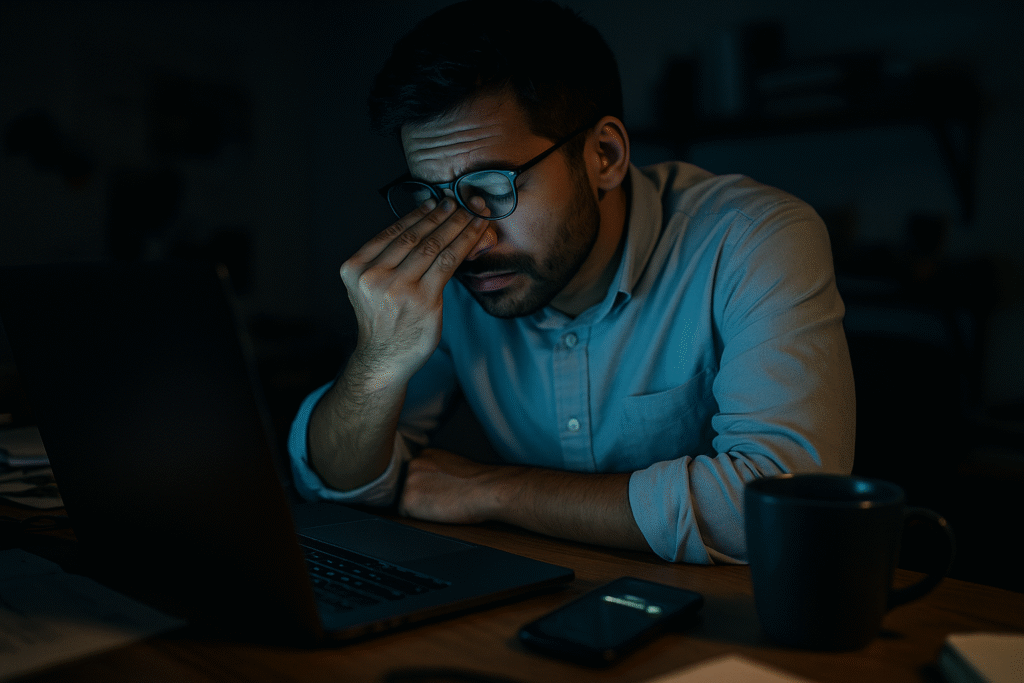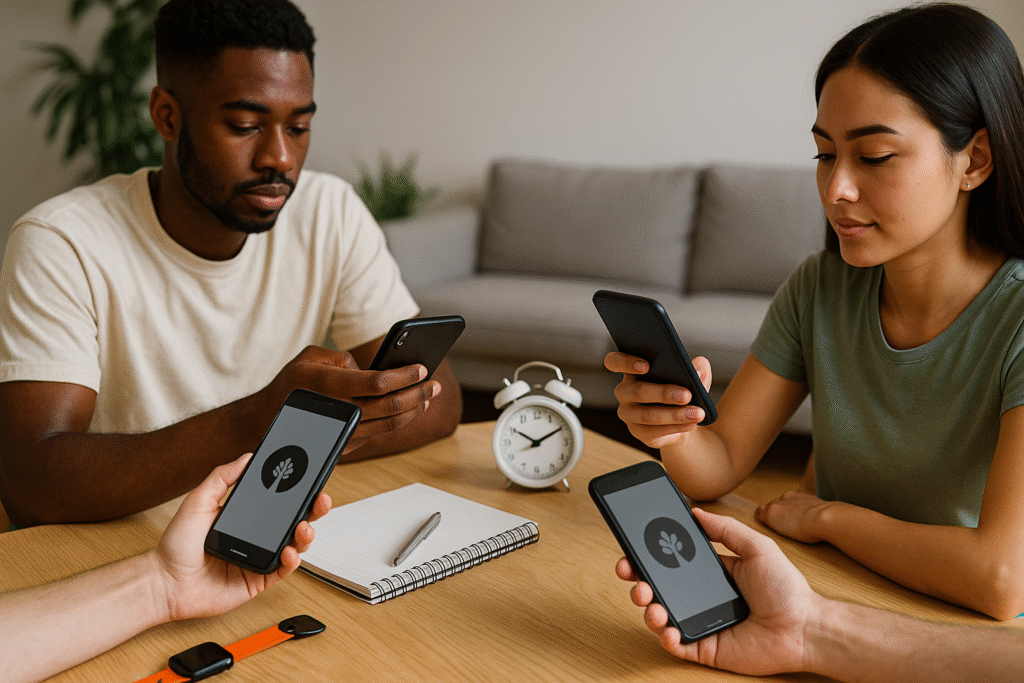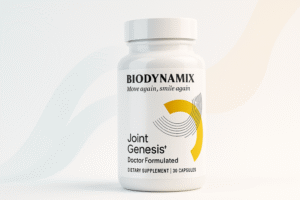In the age of constant connectivity, our screens often dictate our daily lives. From endless notifications to social media rabbit holes, digital distractions have become a silent epidemic, silently eroding our attention, productivity, and peace of mind.
A digital detox—a strategic break from technology—has emerged as a powerful way to reset your brain, reclaim your time, and refocus your energy on what truly matters. In this article, we’ll explore how to implement a sustainable digital detox routine that enhances mental clarity, improves well-being, and helps you live more intentionally.
The Hidden Cost of Digital Overload

Understanding Screen Fatigue and Mental Drain
The average American spends over 7 hours daily staring at a screen, whether for work, entertainment, or social interaction. This constant stimulation doesn’t just wear out your eyes—it taxes your cognitive resources. Screen fatigue leads to decreased focus, irritability, and even sleep disruptions.
Scientific Link Between Excessive Screen Time and Brain Fog
Studies have shown that excessive digital consumption is linked to reduced gray matter in areas responsible for attention and memory. Chronic exposure to blue light also affects melatonin production, disrupting circadian rhythms and degrading sleep quality.
Screen Time Impact Chart
| Behavior | Effect on Brain | Associated Symptoms |
|---|---|---|
| 6+ hrs of daily screen time | Reduced cognitive flexibility | Brain fog, forgetfulness |
| Blue light exposure after 9 PM | Suppressed melatonin production | Insomnia, poor sleep quality |
| Social media scrolling > 3 hrs | Increased cortisol release | Anxiety, irritability |
Digital detox screen time impact chart for focus and mental clarity
Digital Detox Strategies That Actually Work
Start with a 24-Hour Device Fast

A complete break—even if just for a day—can reset your mental baseline. Choose a weekend day, notify friends and family in advance, and plan offline activities like hiking, journaling, or reading a physical book. The goal is to break the habit loop and feel the mental clarity that comes from disconnecting.
💡 Quick Tip
Leave your phone in another room and replace idle scroll time with a tactile activity like sketching or cooking.
Use App Limiters and Screen Management Tools
Digital detox doesn’t mean ditching your devices forever—it’s about control. Apps like Freedom, Forest, and Digital Wellbeing (on Android) help monitor and limit your screen use. Use grayscale mode or disable push notifications to reduce temptation.

✅ Expert Summary
According to a 2023 study from the Journal of Behavioral Addictions, users who reduced their screen time by 50% reported a 30% increase in daily focus within two weeks.
Detox Apps Comparison Table
| App | Key Feature | Best For | Platform |
|---|---|---|---|
| Freedom | Website and app blocking | Full-device focus | iOS, Android, Web |
| Forest | Gamified focus with tree growth | Habit-building | iOS, Android |
| Digital Wellbeing | Usage tracking and app limits | Daily awareness | Android |
Alt Text: Comparison of digital detox apps to boost focus and productivity
Common Myths and Mistakes About Digital Detox
“I Need My Phone for Everything” – The Dependency Myth
Many people avoid digital detox because they believe their phone is essential for navigation, communication, and productivity. While partially true, this mindset often masks a deeper dependency. Tools like paper planners, physical maps, or scheduled check-ins can reduce overreliance.
📌 Did You Know?
A study from the University of Pennsylvania found that participants who limited social media to 30 minutes a day felt significantly less lonely and depressed after just three weeks.
Going Cold Turkey Is Always the Best Approach
Detoxing isn’t one-size-fits-all. Going fully offline works for some but may overwhelm others. Gradual reduction—such as no screens an hour before bed or screen-free mornings—can be just as effective and easier to sustain.
✅ Expert Summary
Behavioral experts recommend tailoring detox plans to your lifestyle. Even small, consistent changes compound over time and help rewire habits sustainably.
Real Case Study – Sarah’s 14-Day Screen Reset
Sarah, a 34-year-old marketing manager, was experiencing burnout. She initiated a structured digital detox, starting with a “no phone before 10 AM” rule and cutting social media to weekends only. After 14 days, her sleep improved, she read two books, and her daily anxiety score dropped by 40%.

Step-by-Step Guide to Your Own Digital Detox
Essential Tools and Ingredients for a Successful Detox
You don’t need much to start—just intention and structure. Here’s what helps:
- Analog tools: Use notebooks, wall calendars, and alarm clocks to reduce digital reliance.
- Tech support: Install focus apps like RescueTime or enable Focus Mode on your devices.
- Environmental changes: Create screen-free zones at home, like your bedroom or kitchen.
💡 Quick Tip
Put your phone in a lockable box or in another room during high-focus tasks or personal time.
A Simple 7-Day Digital Detox Plan
| Day | Focus | Action Step |
|---|---|---|
| 1 | Awareness | Track your total screen time |
| 2 | Boundaries | No screens 1 hour after waking up |
| 3 | Environment | Remove unnecessary apps and notifications |
| 4 | Replacements | Replace 1 hour of screen time with a hobby |
| 5 | Communication | Tell friends you’re on detox—create accountability |
| 6 | Reflection | Journal about changes in mood or focus |
| 7 | Integration | Keep one habit going beyond the detox |
Alt Text: 7-day digital detox schedule to reclaim focus and time
✅ Expert Summary
Starting small and focusing on replacement, not just removal, makes detox habits stick.
Bonus Tips and Long-Term Digital Balance
Advanced Digital Boundaries for High Achievers
If you’ve mastered the basics, here are next-level strategies:
- Theme your days (e.g., “No Social Media Mondays”).
- Time block digital usage into your calendar like meetings.
- Create tech curfews—devices off after 8 PM.
📌 Did You Know?
Top productivity experts like Cal Newport advocate for “deep work” sessions—uninterrupted blocks of time free from any digital noise.
How to Maintain Digital Clarity for Life
Digital detox isn’t just a reset—it’s a lifestyle shift. To maintain your gains:
- Audit screen time weekly and adjust limits.
- Celebrate screen-free wins (e.g., completing a book, better sleep).
- Build real-world rituals like morning walks or offline journaling.
✅ Expert Summary
True digital balance isn’t about avoidance—it’s about intentionality. Use tech as a tool, not a default.
Conclusion
In a world that thrives on pings, scrolls, and endless streams of content, taking a step back can feel radical—but it’s also transformative. A well-structured digital detox helps you reclaim mental clarity, deepen your focus, and live more intentionally. Whether it’s a 24-hour screen fast or a lifestyle shift, what matters is starting—and staying consistent.
So the next time you feel overwhelmed or disconnected from the present, remember: your mind deserves rest. Your time is yours to reclaim.
Main Takeaways
- Digital overload drains cognitive energy and focus.
- A digital detox improves sleep, mood, and productivity.
- You don’t need to quit tech—just control it intentionally.
- Start with small habits like screen-free mornings or app limiters.
- Sustainable detox routines lead to lasting mental clarity.













